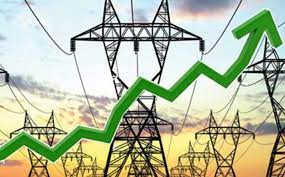Power tariff hike of Rs 6.1 per unit is likely for April bills
Power consumers will likely to bear the burden of Rs 60 billion as power generation costs continues to rise
The Central
Power Purchasing Agency (CPPA) has once again approached the National Electric
Power Regulatory Authority (Nepra) to allow the companies collect Rs6.10/unit
additional from the power consumers in their electricity bills of April 2022,
as they paid less than an actual cost of power generation in the month of
January 2022. The costly imported fuel is pushing the government to pass on its
full impact to the power consumers.
The CPPA has
asked the authority for the monthly fuel cost adjustment (FCA) as it said that
the fuel cost, oil and RLNG were much higher than what was charged from
consumers. The total impact of the increase will be translated into additional
collection of around Rs60 billion.
The power
tariff hike would not be applicable to lifeline consumers or the customers of
K-Electric.
The most
expensive electricity was generated from high-speed diesel (HSD) during the
month of January 2022. The cost of the electricity produced using HSD
registered at Rs25.98 per unit.
Nepra, in a
public hearing notice about the FCA for the month of January, has invited all
the interested parties to raise written as well as oral objections as
permissible under the law.
Under
Section 31(7) of the Nepra Act (XL of 1997) and the mechanism for monthly fuel
price adjustment prescribed by the authority in the tariff determinations of
ex-WAPDA distribution companies, the authority may on monthly basis make
adjustments in the approved tariff on account of any variations in the fuel
charges and policy guidelines as the federal government may issue and notify
the tariff so adjusted in the official gazette.
According to
the petition, the total energy generated in January was 8,797 GWh at a total
price of Rs107.5 billion, which is Rs12.2199 per unit. Of the total, the net
electricity delivered to Discos was 8420.73 GWh with transmission losses of
330.85 GWh.
According to
the data provided to Nepra, the most expensive sources of energy generation
including high speed diesel (HSD) and residual fuel oil (RFO) were consumed
more than previous months, which also jacked up the total cost of generation,
while the least expensive (renewable) share reduced drastically during the
month. Interestingly, the share of RLNG-based power also reduced sizably.
The highest
share of energy source in the total pie was of coal. Power generated from coal
was 2,916.7 GWh (or 33.15pc) with a cost of Rs14.1049/unit. Its cost was also
much higher due to price-hike in international market. It was followed by local
natural gas and nuclear sources with 14.37 per cent (1264 GWh) each, while the
gas charges were Rs7.747/unit and nuclear was Rs1.075/unit.
Furnace-based
electricity was generated of around 1238.11 GWh (14.07pc) with a unit cost of
Rs22.807. The energy generated from imported RLNG was 626 GWhs or 7.12 per cent
of total generation with cost of Rs16.703/unit. HSD-based energy was generated
of 592 GWh costing Rs25.98/unit. Interestingly, due to normal water shortage in
dams in winter, the share of hydropower generation was only 512.94 GWhs or 5.83
per cent in January.
Business correspondent













Post a Comment